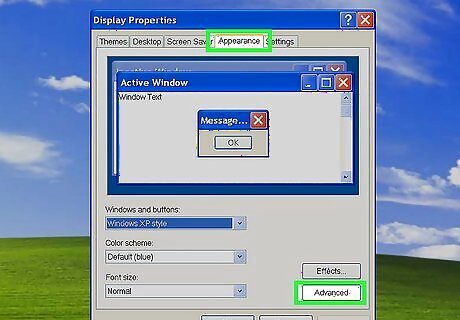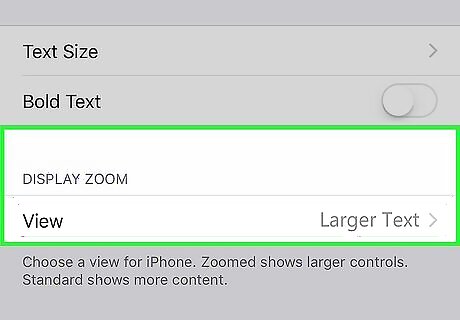
views
Using Windows 11, 10, 8.1, 7, Vista

Right-click an empty area of the desktop. A pop-up menu will open. For a quick adjustment, place your mouse cursor on an empty area of the desktop. Hold CTRL on your keyboard and scroll down with the mouse wheel to make the icons smaller.

Hover over View. This will expand the menu. The top three options on this menu show different icon sizes. There will be a bullet point next to your desktop icons’ current size.

Click a new size. If your icons are already set to Large or Medium, select Small icons. The changes will be applied immediately. In Windows Vista, “Small” is called “Classic”. You can also uncheck Show desktop icons to hide your icons temporarily or even auto-arrange them.
Using Mac

Right-click an empty area of the desktop. If you don't have a right-click mouse, you'll need to hold the Control key on your keyboard as you click. This is called a control-click. A pop-up menu will open.

Click Show View Options. This will open a new window.

Drag the "Icon size" slider to the left. The current icon size is displayed at the top of the window (e.g., 48 x 48). As you move the slider to the left, the Icon Size value will decrease. The smallest possible icon size is 16 x 16, and the largest is 128 x 128. The changes will be applied immediately. When you're finished, exit the window.
Using Windows XP

Right-click an empty area on the desktop and click Properties. This will be in the pop-up menu

Click Advanced. You can find this in the bottom-right corner of the window.

Click the "Item" drop-down menu and select Icon. This will allow you to change the icon sizes.

Enter a smaller number into the "Size" field. You can enter a number manually in the field or use the down arrow to decrease the number.

Click OK. This will save your changes. If you want to change the icon size again, repeat the steps above and set a new number for Size.
Using iPhone or iPad

Open the Settings app. This is the grey cog icon. If your iPhone or iPad has abnormally large icons, you may have Display Zoom enabled.

Tap Display & Brightness. You can find this underneath Control Center.

Scroll down and tap Display Zoom. This will be underneath the Display header at the bottom of the page.

Select Default. If this feature was previously enabled, it would be set to Larger Text.

Tap Done. This will save your changes. If your screen looks zoomed in, double-tap with three fingers to zoom out. Then, go to Settings → Accessibility → Zoom → toggle off Zoom.
Using Android

Open the Settings app. You can access this quickly by opening Quick Settings and tapping the grey cog icon. Icons can only be resized in newer versions of Android.

Tap Display. This will be underneath Sound & vibration.

Tap Display size and text. On some devices, you may need to tap Advanced and Display size first.

Drag the slider to the left. This will make the icons smaller. You'll see a preview of the app size as you drag. When you're finished, return to the home screen to save your changes.




















Comments
0 comment